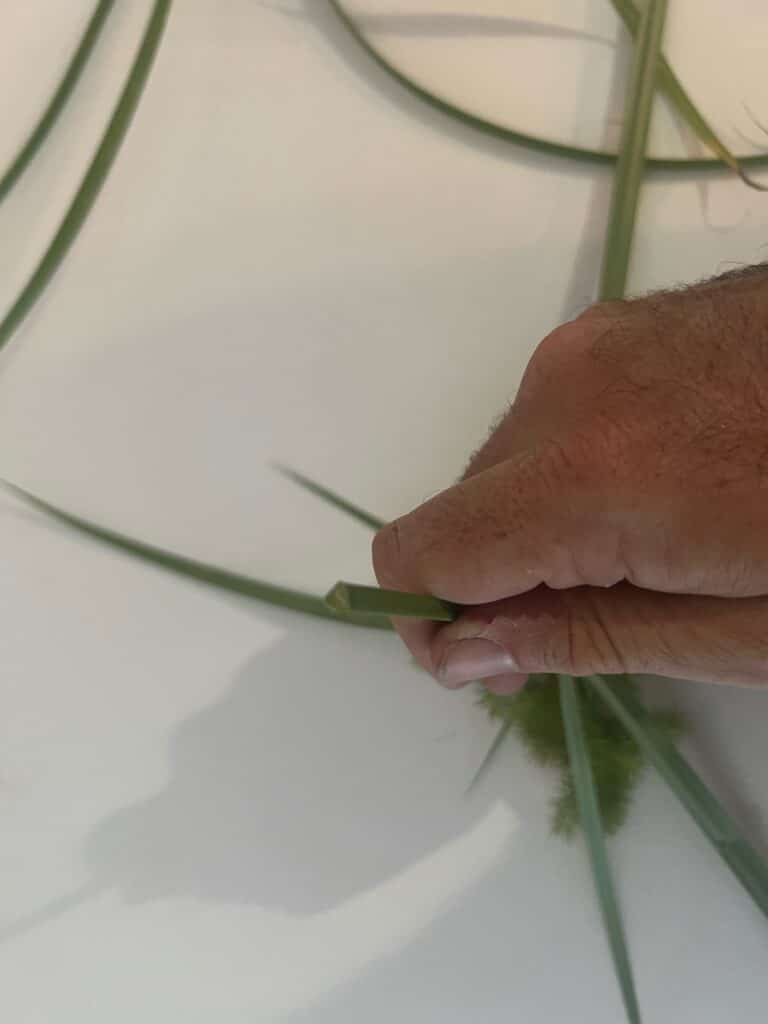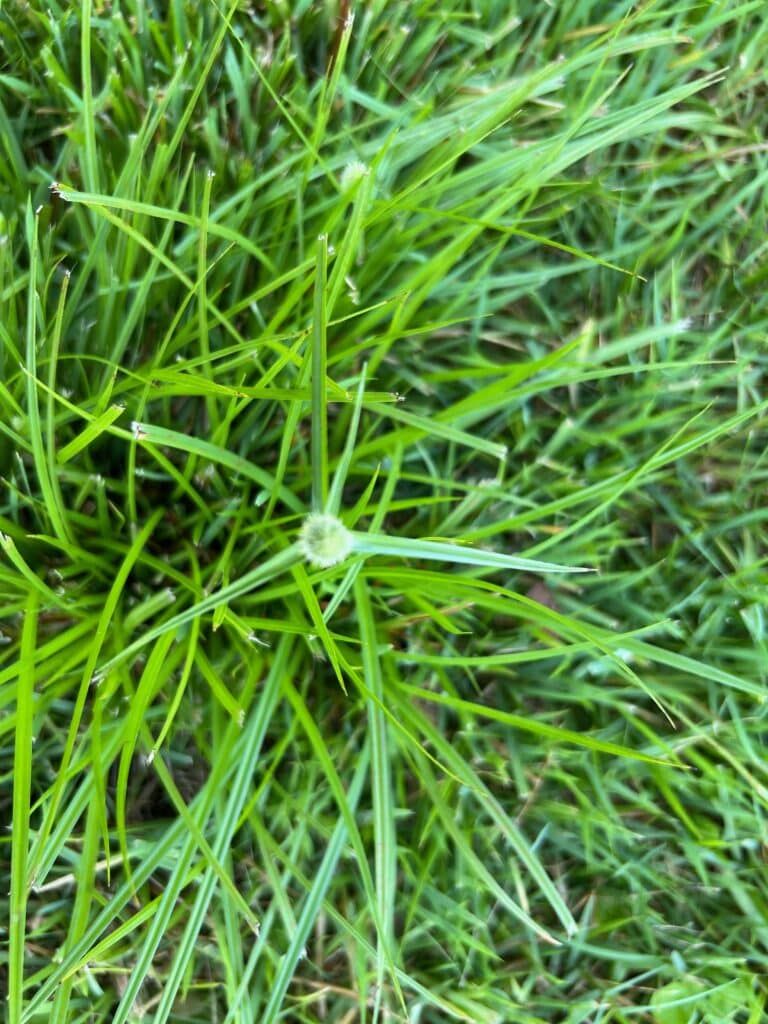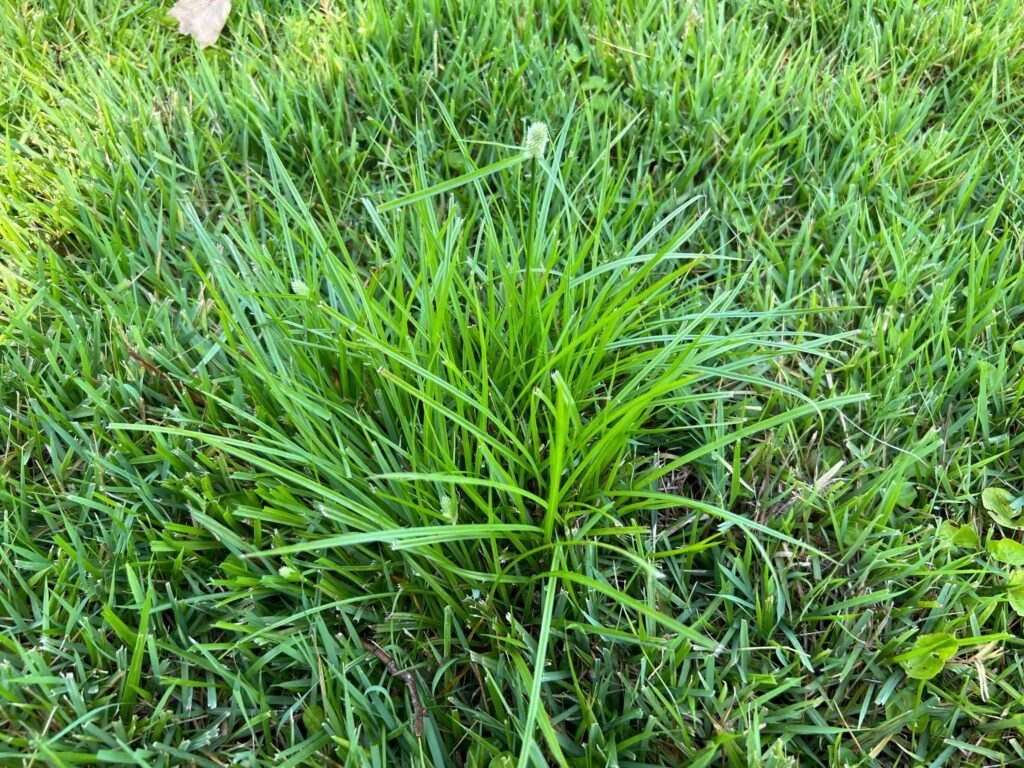How lawn care technicians identify green kyllinga.
Updated: Aug 1, 2023
Green kyllinga, also known as Kyllinga brevifolia, is a perennial weed that is commonly found in lawns and other turf areas. This type of weed is a member of the sedge family and is characterized by its bright green color and triangular stems. Green kyllinga can be a nuisance in lawns as it competes with grass for nutrients, water, and sunlight.
Identifying green kyllinga
Common to all sedges is a solid triangular stem.

Notice that at the stem it produces one seed head. This seed head will be surrounded by what is called a 3-ranked leaf structure. The three leaves will come off of the stem in a triangular pattern directly below the seed head. These seed heads quickly produce weed seeds.

Its growth habits are also an identifying trait. Unlike yellow nutsedge that appears to grow as individual plants, green kyllinga forms dense mats. This mat forming lawn weed spreads quickly by underground stems call rhizomes. As it spreads it will form dense clumps filling in large areas.

This lawn was mowed about six days ago. Notice how much faster this weed has grown compared to the surrounding turf.
What does green kyllinga tell lawn care technicians abouts a clients yard
Green kyllinga can provide valuable information to lawn care technicians about a client’s yard. When lawn care technicians spot sedges, it often indicates that the lawn is being overwatered. Sedges thrive in moist soil, so it can be a clue that the client can save money on their monthly watering bills by adjusting their watering practices.
Additionally, the presence of sedges can also suggest issues with clogged gutters or overflowing gutters. Technicians have found it growing below eaves of homes with clogged gutters or downspouts.
It is also common to see green kyllinga growing in natural drainage swales that experience excess storm runoff. By identifying green kyllinga, lawn care technicians can gain insights into the watering and drainage conditions of a client’s yard.
Weed control for green kyllinga
Controlling green kyllinga can be challenging, as it has an extensive root system and can quickly spread through rhizomes and seeds. Here are a few methods for weed control:
1. Cultural control: Maintaining a healthy lawn through proper mowing, watering, and fertilization can help prevent green kyllinga from becoming established. For green kyllinga this often starts with reducing excess water.
Water soaked soil often develops root rot in desirable turf species. It will promote fungal issues that can spread through the entire turf. While weaking the desirable turf, it creates an area where sedges can thrive.
A soil analysis can then be performed to identify soil compaction issues. If the soil is overly compacted it will struggle to drain water. Aeration is often needed to solve this issue. Another benefit of the soil analysis is it can help identify why the desirable turf species is struggling in that area.
2. Herbicides: Our lawn care technicians use selective post emergent herbicides specifically designed for controlling sedges, such as green kyllinga, in the affected areas without harming desirable turfgrass species. These targeted weed killers help us to get the weed population under control and prevent weeds from spreading.
3. Integrated pest management (IPM): IPM involves using a combination of cultural, mechanical, and chemical control methods to manage weeds. This approach focuses on long-term prevention and reducing reliance on herbicides.
It is important to note that green kyllinga can be persistent. It may require multiple treatments over time to kill the weeds out of the lawn. Consulting with a professional lawn care company can help get this pesky weed in line. Advance Lawn Care uses IPM to bring out the best in our clients yards.
